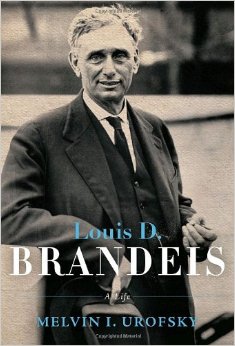A review of Curtis Wilkie’s new book about Mississippi trial lawyer Dickie Scruggs, ‘The Fall of the House of Zeus: The Rise and Ruin of America’s Most Powerful Trial Lawyer.’ It has a confusing cast of characters and offers way too much information. Worse, its author’s bias toward his subject, who is a friend, shows everywhere, particularly in Wilkie’s attempt to portray Scruggs’ banal criminal misconduct as tragedy.
‘The Fall of the House of Zeus: The Rise and Ruin of America’s Most Powerful Trial Lawyer’
by Curtis Wilkie
Harmony, 400 pp., $25.99
Dickie Scruggs, in his heyday, was one of the most powerful trial lawyers in America. From his Mississippi-based law offices, he aggressively challenged Big Tobacco, asbestos companies and some of the largest corporate interests in America in enormous class-action lawsuits, raking in millions in legal fees along the way.
A brother-in-law of Trent Lott, the former U.S. Senate majority leader, Scruggs was well connected in Southern politics and seemed invincible. He spent lavishly on yachts, vacation homes and private jets. Ultimately, though, his empire collapsed when he was convicted and sent to jail for conspiring to bribe a Mississippi state court judge in 2008.
In “The Fall of the House of Zeus,” Curtis Wilkie, professor at “Ole Miss” (the University of Mississippi), tells the story of Scruggs’ rise and surprising fall. Although a revealing tale of corruption, the book is significantly burdened by several flaws.
First, Wilkie seems unable to tell the story without introducing approximately 700 characters, each with a short biographical sketch (offered for no apparent purpose). This leaves the reader gasping for breath and wanting to reach for a pencil to try to outline all the relationships and sort out which little subplot is or isn’t significant or meaningful to the larger morality tale. To say that the narrative thread is lost would be a vast understatement. The editors here surely should have been given some strong coffee and encouraged to use the red pens they were given when hired.
Perhaps more significantly, despite Wilkie’s best efforts to portray Scruggs’ legal trouble as a Greek tragedy, it falls just a bit short. It’s indeed a shame that Scruggs attempted to bribe a state court judge to subvert justice and went to jail as a result, but this is hardly what most would consider a tragedy. It might be better characterized as what we sometimes call “justice.” Wilkie, who candidly admits that he is close to Scruggs, is unable to separate himself from his friend and tells the story from the most favorable viewpoint for his subject – damning almost everyone else as biased, unfair or partisan. Wilkie, of all people, should have known better: History at short range is dangerous, and this is a classic example.
Finally, Scruggs’ misconduct is indeed offensive, but it’s nothing more than obviously stupid, not to mention criminal, misbehavior. Sometimes legal ethics can be complicated or arcane, but any schoolchild can identify an effort to bribe a judge as wrong. The more obnoxious misconduct here is what was legal. The book is crammed full of conniving, snarky lawyers cutting deals to divide millions of dollars of legal fees from class actions, then bickering among themselves, suing each other and generally acting like spoiled children squabbling over money.
But that’s all legal and, at least to Wilkie, apparently normal behavior. It’s not a pretty picture. But in that context, it’s hardly a surprise that Scruggs found the temptation irresistible to weight the scales in his favor. Wilkie may have intended the reader to sympathize with Scruggs. Revulsion is the more likely, if unintended, result.









